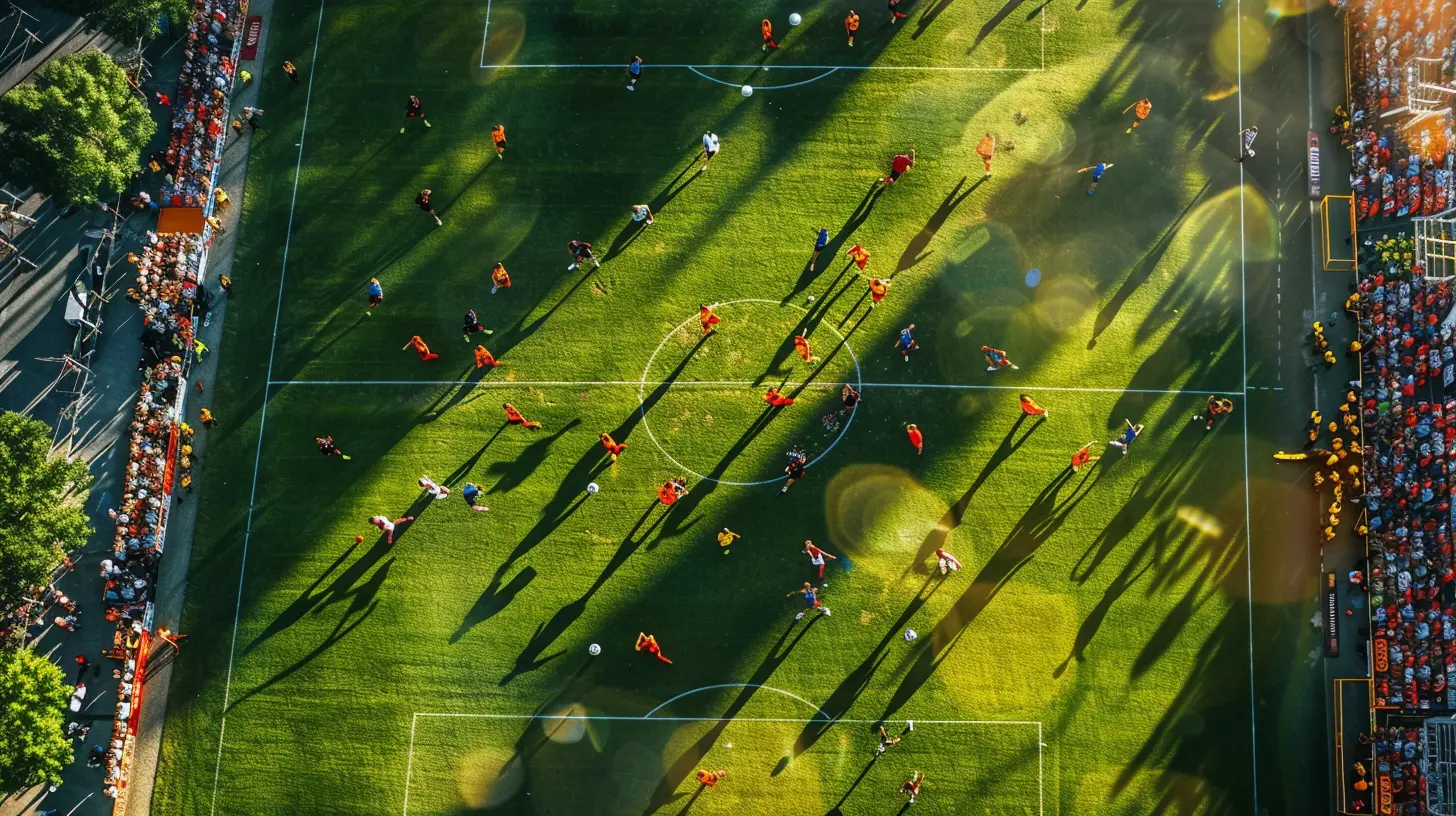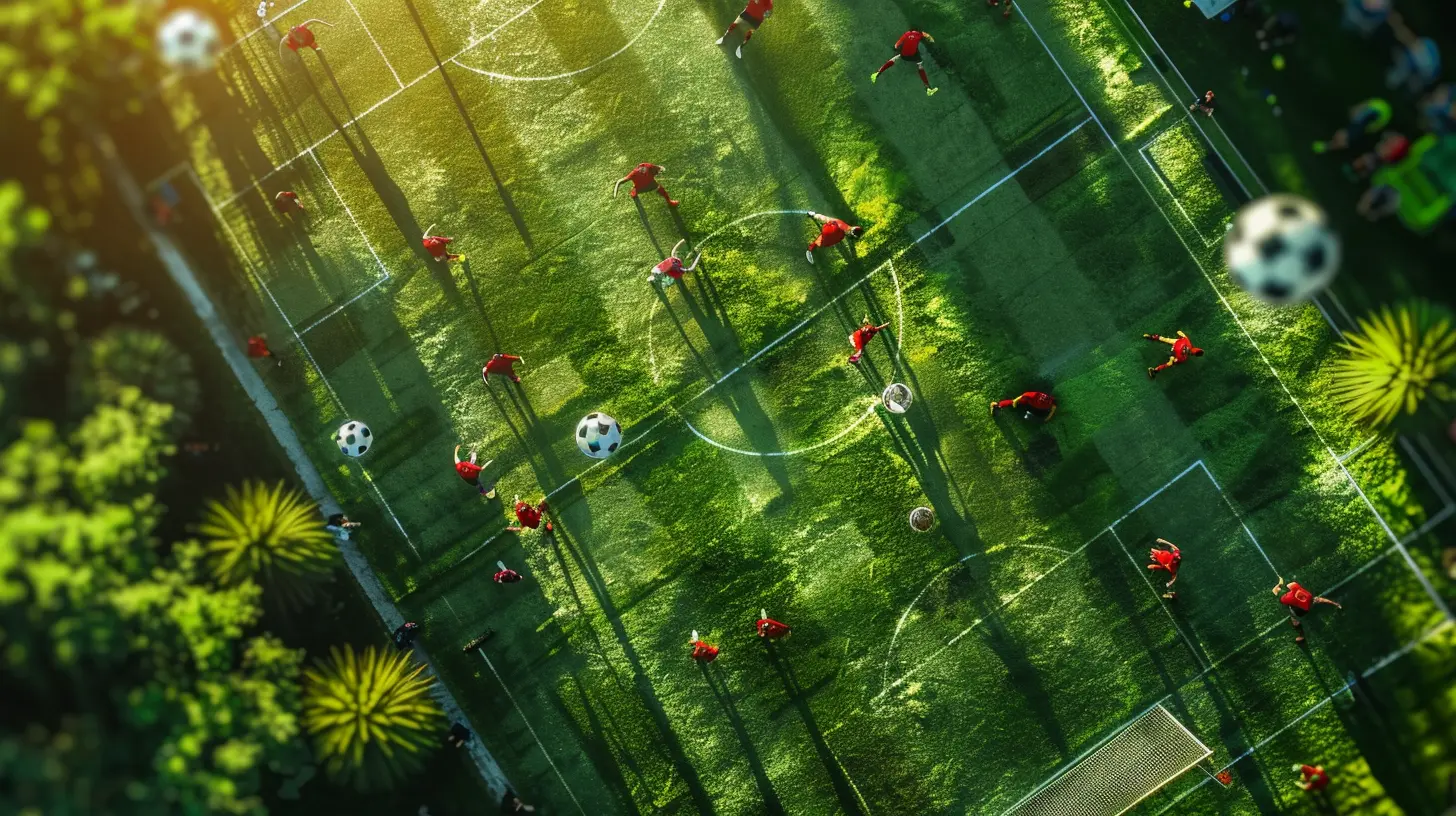Zonal vs. Man-to-Man Defense: Which Works Best?
31 May 2025
Defense wins championships. That’s a phrase you've probably heard a million times in sports. But when it comes to basketball, soccer, football, or even hockey, the debate rages on: Which defensive strategy is superior—zonal or man-to-man?
Some coaches swear by the structure of a zone, while others believe man-to-man is the only way to go. But here’s the real question: Is one truly better than the other, or does it all depend on the game, the players, and the strategy? Let's break it all down.
What Is Zonal Defense?
Think of zonal defense as guarding invisible areas rather than specific players. Each defender is responsible for covering a designated "zone" on the field or court, and when an offensive player enters their territory, they pick them up.How It Works
- Players guard an area instead of an individual opponent.- Defensive movements are based on ball location and offensive movement.
- Helps cover passing lanes and limits penetration.
- Relies heavily on communication and awareness.
Strengths of Zonal Defense
✅ Energy Conservation – Players don’t have to chase opponents all over the field, meaning they stay fresher for longer.✅ Great Against Fast, Athletic Teams – If the opponent has lightning-fast dribblers or runners, a zone limits their space and forces outside shots.
✅ Minimizes Individual Mismatches – A slower defender won't be exposed one-on-one against a quick opponent.
✅ Forces Perimeter Shots – In basketball, for example, zones often force teams to take more outside shots instead of driving inside.
Weaknesses of Zonal Defense
❌ Vulnerable to Precision Passing – Teams that excel at quick passing can break a zone easily.❌ Rebounding Can Be Tricky – Since defenders aren't assigned specific players, boxing out can be tough.
❌ Not Ideal for Aggressive Defense – If you want to apply heavy pressure, man-to-man is usually better.

What Is Man-to-Man Defense?
Man-to-man defense is exactly what it sounds like—each defender is assigned to guard a specific opponent. No zones, no shared responsibilities—it’s all about locking down your man.How It Works
- Each defender stays with their assigned player, following them wherever they go.- Defensive structure shifts based on offensive movement.
- Requires athleticism, quick footwork, and endurance.
- Strong communication is vital, as switching assignments often occurs.
Strengths of Man-to-Man Defense
✅ Great for Disrupting Individual Scorers – If an opponent has a dominant player, putting a lockdown defender on them can neutralize their impact.✅ Forces More Turnovers – With tight on-ball pressure, passing lanes shrink, leading to more steals.
✅ Better for Defensive Transitions – Since defenders are always matched up, it prevents confusion during fast breaks.
✅ More Pressure, More Mistakes – Aggressive defenders can cause errors by staying glued to their opponents.
Weaknesses of Man-to-Man Defense
❌ Fatigue Can Be a Factor – Some players aren’t built to chase opponents all game long.❌ Mismatch Nightmares – If a speedy guard gets matched up against a slow-footed defender, it’s a problem.
❌ Requires High Defensive IQ – Poor defenders can get exposed quickly if they can’t keep up.

Zonal vs. Man-to-Man: When to Use Each
Okay, so now that we know how each system works, the real question is: Which one is better? Well, it depends on a few key factors.1. The Opponent’s Strengths and Weaknesses
- If you're facing a team with one dominant scorer, man-to-man might be better to lock them down.- If you're going against a team that thrives on ball movement, zonal defense can disrupt their rhythm.
2. Your Team’s Personnel
- Got a squad full of fast, athletic defenders? Go man-to-man and apply pressure.- Have size and length but lack quickness? A zone could work wonders.
3. Game Situations
- Late-game scenarios often favor man-to-man because it’s more aggressive.- If your team is in foul trouble, a zone can help avoid unnecessary fouls.

The Hybrid Approach: The Best of Both Worlds?
Who says you have to choose just one? Some of the best defensive teams mix up their strategies mid-game to keep opponents on their toes.Popular Hybrid Defenses
- Match-Up Zone Defense – Looks like a zone but shifts into man-to-man when needed.- Box-and-One – Four defenders play zone while one hounds the opposing team’s best player.
- Pressing Zone – A full-court defensive scheme that starts in man-to-man but falls into a zone.
By switching defenses mid-game, teams make it harder for opponents to find a rhythm. Unpredictability is a weapon.
Final Verdict: Which Works Best?
There's no one-size-fits-all answer. The best defense depends on who you’re playing, who you have, and what your game plan is. Zone defense is great for structured, team-based protection, while man-to-man is perfect for high-pressure, one-on-one battles.If you're a coach or a player, the best advice? Master both. The ability to switch defenses on the fly can be the difference between winning and losing.
So, next time you’re watching a game, pay close attention. Are they running zone? Man-to-man? A mix of both? The answer might just help you see the game in a whole new way.
all images in this post were generated using AI tools
Category:
TacticsAuthor:

Nelson Bryant
Discussion
rate this article
3 comments
Lyanna Cantu
Great article! It’s fascinating to see the strengths and weaknesses of zonal versus man-to-man defense laid out so clearly. Each strategy brings unique challenges and rewards. Excited to see how teams adapt these tactics in upcoming games! Keep up the great work!
June 16, 2025 at 2:53 AM

Nelson Bryant
Thank you! I'm glad you found the discussion on zonal and man-to-man defense insightful. It will be interesting to see how teams implement these strategies in future games!
Micah McAleer
Zonal: for the tactical; Man-to-Man: for the chaos!
June 6, 2025 at 4:02 AM

Nelson Bryant
Great summary! Both strategies have their strengths, depending on the game situation.
Avery McGrady
Both zonal and man-to-man defenses have their strengths and weaknesses. The best choice often depends on the team's style, player skills, and the opponent’s strategy. Adaptability is key.
May 31, 2025 at 4:09 AM

Nelson Bryant
Absolutely! Adaptability is crucial, as the effectiveness of each defense style can vary based on team dynamics and opponent tactics.



